While storytelling has become ubiquitous in advertising, and numerous books tell you why stories are important for your brand, I can actually show you how to craft and tell compelling stories that sell.
“He who tells sells,” is a universal marketing mantra for a reason.
Stories work, but they take work. I am finishing my book, Story Built, which will help you create a more authentic and powerful brand story through the proven 10-step method called the Story Cycle.
The Story Cycle is a story creation process distilled from the timeless narrative structure of the ancients, inspired by the screenwriters of Hollywood, influenced by masters of persuasion, guided by trend seers, and informed by how the mind grapples for meaning.
What I have learned is that the Story Cycle is a fundamental blueprint for the journeys we all experience and the tales we tell about our travels. Because stories are everywhere in our lives, we have found that business leaders who attend to their brands – like an author writes a book, or a director directs a movie – typically outperform their competition because they understand their own story, appreciate the journeys their customers are on, and connect the two worlds through shared values captured in narrative.
Smart story marketers have evolved from being promoters of stuff to publishers of valued content. They view consumers as allies. For instance, Patagonia, with its “Don’t Buy This Jacket” campaign, has reframed the story of retail consumption-for-consumption-sake by encouraging their customers to not buy the company’s products unless they are really needed. Patagonia is connecting the values it shares with its customer of enjoying the planet and reducing their impact through the stories they live and tell.
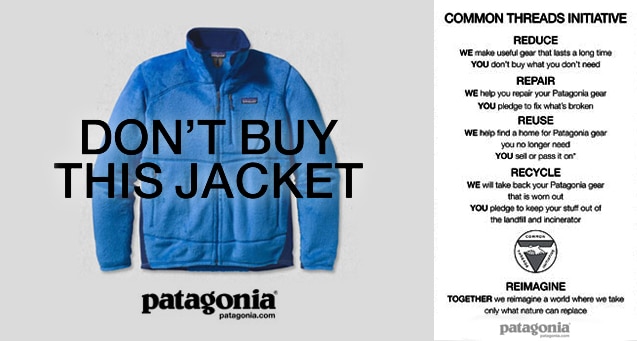
Red Bull calls out the daredevil in all of us, especially the one that lives vicariously through the feats of others. The brand stages and documents these exploits through Red Bull’s photo, film and publishing empire. Why? Because stories let us try on trouble. We get to emotionally experience it without all the messy aftermath. Stories allow Red Bull to give us wings.
Blake Mycoskie’s story began in Buenos Aires when he noticed that many of the children there had no shoes. He created Toms Shoes, a brand that would donate a pair of shoes for every pair its customers bought. He didn’t invent a story for his brand. He created the brand to fulfill his story. The brand IS the story.

Storytelling allows brands to explore their core morals and beliefs, authentically share these principles through compelling narrative, and intimately connect with the shared values of their customers.
We use the Story Cycle for everything from high-level brand strategy to the tactical executions of advertising campaigns. At 50,000 feet, the 10-step process allows you to build consensus among your company’s leadership for what your brand truly stands for.
You can use the Story Cycle to research and write personas about each of your audiences, customers, and/or users, which builds empathy for what it is they want out of life and how you can help them achieve it.
In another iteration, the Story Cycle guides the creative campaign development process, assuring that the personality of your brand is convincingly expressed to engage with your audiences. Where you tell your story is as important as how well you tell it. Therefore, the Story Cycle is also a natural way to map your communications plan, because it helps you align your stories with the channels your customers prefer.
On the tactical level, the Story Cycle is ideal for website user design, because it approaches navigation from an experiential perspective: the journey your visitor will take on your site. The process encourages you to consider how your user will interact with your site just as if a story is unfolding before them. Although you are authoring the experience, the user is driving it. It is a symbiotic experience that when done well will truly separate your online storytelling from the competition.
Speaking of user experience, when was the last time you were blown away by a powerpoint presentation? Watch any of the top TEDTalks, presentations by thought leaders in technology, entertainment and design from around the world, and you will see the undercarriage of the Story Cycle.
These speakers seem to inherently understand story structure, and they use it to their advantage. When you use the Story Cycle to outline and create your next presentation, you will own the boardroom. Minds will be open and receptive to your thoughts because you are presenting in a way that the brain is hardwired to receive the information. It physically recoils from stats and facts, while it can’t resist the suction of story.
Now I’m not suggesting that you can go through the Story Cycle once and all of these communication strategies and tactics will magically appear. What I am saying is that we have applied this same intentional 10-step process to each of these brand storytelling activities with remarkable results, which will be detailed in the book.
What I have learned is that storytelling is a fractal of itself, meaning that our lives follow this same story pattern whether we’re on some grand pursuit or trudging through tedium. The Story Cycle happens time and again, in roughly the same sequence, expanding with every virtuous revolution.
One thing to remember as we explore the 10 steps of the Story Cycle is the fundamental three-act structure of story. In the simplest of terms, stories have a beginning, middle and an end.
In argument, as in story, Plato defined these elements as thesis, antithesis, and synthesis. In music, the greats like Mozart wrote in the three-part sonata form that involved an exposition, development, and resolution. American mythologist Joseph Campbell titled these events separation, initiation, and return. In Hollywood, the classical narrative structure is setup, confrontation, and resolution.
Story structure is so universal, even cavemen used to do it:
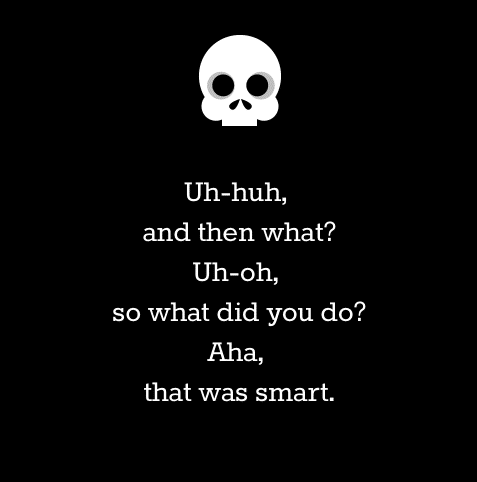
Pay particular attention to UH-OH, or act act II, because that is where conflict lives. No conflict, no story.
Think about it in business. Without considerable market disruption, we have little opportunity for new product or service offerings.
Without the heat of escalating customer demands, we lose our thirst for excellence.
Without competitors bearing down on us, we stop pursuing innovation. Without the threat of supply chain upheaval, we have little incentive to become more efficient and sustainable.
Without vocal communities calling out our shortcomings as a company, we have little reason to step up our corporate social responsibility initiatives.
And without the clamor of social media that drowns out our messages, we are not inspired to become potent storytellers.
Joseph Campbell, America’s foremost mythologist, said that the treasure you seek is buried within the conflict you fear. This is true in every story, and stories are simply the reflections of our lives.
Once you learn how to put the Story Cycle to work for you, like an alchemist, you can turn the heat and raw elements of market conflict into gold.
If you ever find yourself lost on this journey to understand your story, then begin with what my friend, Randy Olson, calls the “And, But and Therefore” method. This is the three-act structure in its most basal form (It was inspired by South Park creator, Trey Parker. If it’s good enough for Cartmen, it’s good enough for me.)
The And is the setup, the But is the conflict, and the Therefore is the resolution. You can read all about it in his superb book on storytelling called Connection: Hollywood Storytelling Meets Critical Thinking, or his latest book, Houston, We Have a Narrative.
Let me give you an example. The following is the And, But and Therefore foundation for this book:
I have been in the advertising business for 30 years, and have experienced many successes, a few mediocre missteps, and a spectacular failure or two.
But technology has changed the marketing landscape forever by enabling the voices of all consumers with a 24/7 global reach that empowers them to own your brand story.
Therefore, now that the influence of mass media has surrendered to the masses who have become the media, brands must transform from promoters of stuff to publishers of meaningful content that connects shared values to drive business results through the one true superpower we all posses – storytelling.
Download a preview of my new book, Story Built. And join me for my weekly Business of Story podcast, where I connect business leaders and communicators with professional story artists to learn tips and techniques that will help you use story to drive business results for your professional services firm.

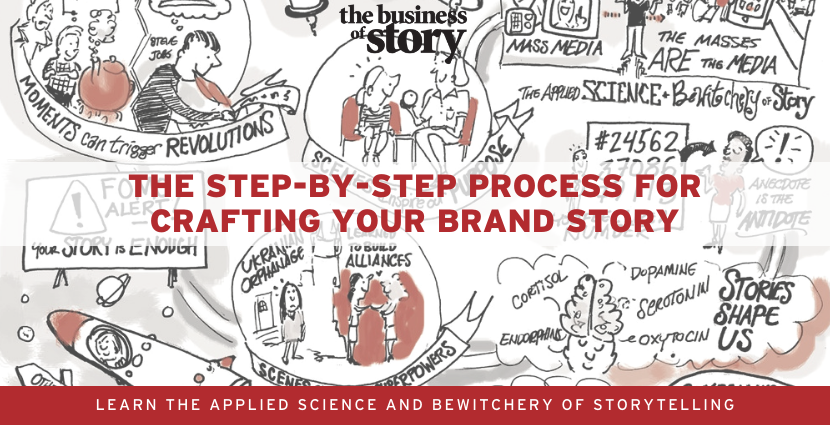
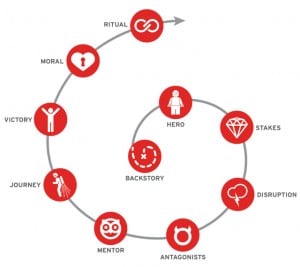

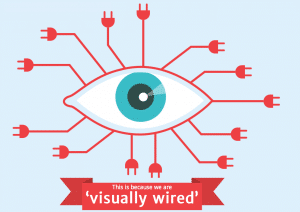
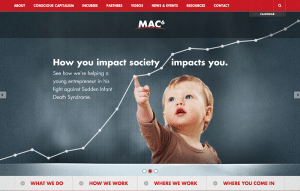

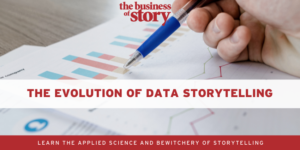





at 3:12 pm
[…] those of you new to the Story Cycle process, it is a 10-step method, inspired by American mythologist Joseph Campbell’s Hero’s Journey universal story […]
at 12:05 pm
[…] Story Cycle process is inspired by Campbell’s work, and is a hybrid of the Hero’s Journey to make it easily […]
at 11:10 am
[…] the Story Cycle process in her own way. What a blessing to receive this from Anne on Twitter following my […]
at 12:07 pm
[…] The four main steps in crafting your gender identity: attending to gender stories; appropriating from gender stories; drafting your own genders tories and creating a coherent identity. It’s described that the process is not sequential so it doesn’t matter in what order we craft our gender. In the text it is described to not be steps, but instead elements of a process. The first “step is to construct your gender stories is to be the narrator of your own story. Many people seek our attention in which we feel pressure to attend to them. In my life, I feel like there’s too many people watching me, too many people waiting for my next move. I feel pressured sometime. We make our choices without consent and we tend to ignore options because we’re to focused on ourselves. Day in and day out I absorb information but use what’s best for my interest. Appropriating from gender stories means paying attention to stories and making a use out of them. It means to take pieces from other stories and construct them into one. Your story. In my personal life I’ve been growing up as a catholic, believing in God and the saints. But as I’ve grown older I have started to nip and sort out different pieces from other religions or from science. I’ve been told to be catholic, but I know there’s more to life than being told you are something. I have friends who are christian, I have friends who are atheist and jewish. I don’t discriminate anyone by their religion. I like to learn about different new things and sometimes I incorporate their beliefs into my own. Drafting gender stories means that our gender stories are constantly shifting. That means I am creating many gender stories. Each story I have created reflects on what type of person I have become or want to become. I’ve created stories in which I tell peers of mine that I want to become a soccer player, but my the story shifts and sometimes I want to be a ceo, but than that shifts and it’s just a constant cycle oscar something I want to be portrayed as. Creating a coherent identity means to combine the craft stories of ourselves into inner version of ourselves. This is when we bring together all the stories and make them into one. We develop a plan and to get to our goal we seemingly start constructing pieces and ways to reach that goal. My ultimate goal in my life is to be a happy person. I want to achieve self happiness and how do I get there ? I start to do things that make me happy. I start to make my loved ones happy. That is my inner coherent goal. I just want to be a happy person. Once I gave achieved that goal, everything else is history. https://businessofstory.com/the-step-by-step-process-for-crafting-your-brand-story/ […]
at 11:42 pm
[…] Photo from Business of Story […]